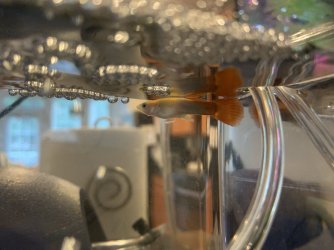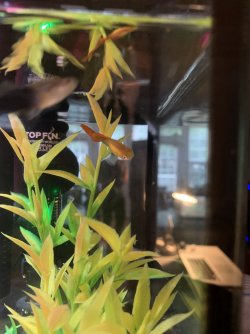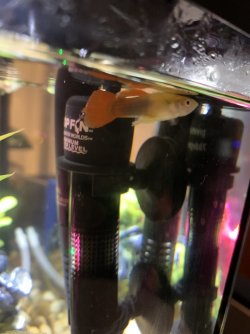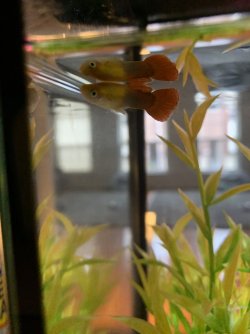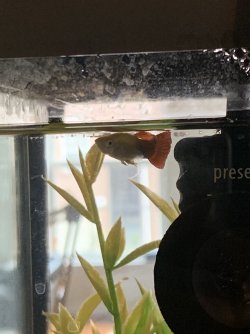re: the swim bladder problems. What symptoms does it have?
Swim bladder problems in fish aren't that common. If the fish sinks when it stops swimming there is a problem.
If the fish floats to the surface as soon as it stops swimming that can be a swim bladder problem or too much air in the fish's digestive tract, caused by taking in air when eating floating foods.
There's no cure for swim bladder problems.
------------------
Fin rot is normally caused by poor water quality that damages the skin and allows bad bacteria to get in and do lots of damage. Doing big daily water changes and salt will usually fix it.
Wipe the inside of the glass with a clean fish sponge.
Do a 75% water change and gravel clean the substrate every day for a week or two.
Make sure any new water is free of chlorine/ chloramine before it's added to the tank.
Add some salt. See below.
------------------
You can add rock salt (often sold as aquarium salt), sea salt or swimming pool salt to the aquarium at the dose rate of 2 heaped tablespoon per 20 litres of water.
If you only have livebearers (guppies, platies, swordtails, mollies), goldfish or rainbowfish in the tank you can double that dose rate, so you would add 4 heaped tablespoons per 20 litres.
Keep the salt level like this for at least 2 weeks but no longer than 4 weeks otherwise kidney damage can occur. Kidney damage is more likely to occur in fish from soft water (tetras, Corydoras, angelfish, gouramis, loaches) that are exposed to high levels of salt for an extended period of time, and is not an issue with livebearers, rainbowfish or other salt tolerant species.
The salt will not affect the beneficial filter bacteria but the higher dose rate will affect some plants. The lower dose rate will not affect plants.
After you use salt and the fish have recovered, you do a 10% water change each day for a week using only fresh water that has been dechlorinated. Then do a 20% water change each day for a week. Then you can do bigger water changes after that. This dilutes the salt out of the tank slowly so it doesn't harm the fish.
If you do water changes while using salt, you need to treat the new water with salt before adding it to the tank. This will keep the salt level stable in the tank and minimise stress on the fish.


